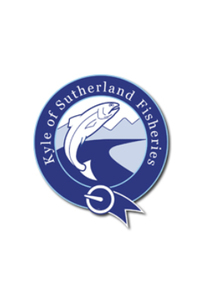Many thanks to the The Salt & Salmon Company at Falls of Shin for facilitating this camera's location. The Farson Digital webcam at the Falls of Shin serves as a valuable tool in monitoring water levels along the River Shin. The River Shin, known as Abhainn Sin in Scottish Gaelic (pronounced [ˈa.ɪɲ ˈʃin]), is situated in the North West Highlands of Scotland.Originating at the southern end of Loch Shin, near the village of Lairg, the river flows predominantly in a southward direction. It passes through Shin Forest and cascades over the majestic Falls of Shin before joining the Kyle of Sutherland at Invershin. From there, it continues its course, eventually merging with the Dornoch Firth at Bonar Bridge and ultimately reaching the North Sea. Although the river forms part of a larger network with multiple tributaries, the section specifically referred to as the Shin spans a length of only 7 miles (11 km). This stretch features several bridges, historical remnants along the banks, and the ruins of a corn mill at Gruid.Significant modifications were made to the river during the 1950s by the North of Scotland Hydro-Electric Board. They constructed the Cassley power station on the banks of Loch Shin, the Lairg power station at the southern end of Loch Shin, and the Shin power station near the river's mouth in Inveran. A sizable dam was erected in Lairg to enhance the storage capacity of Loch Shin, while a smaller dam was built just below Lairg to create Little Loch Shin. A tunnel connects Little Loch Shin to Inveran, supplying water to the power station. Additionally, water diversion from the River Cassley to the west and the River Brora to the east has increased the flow downstream.The River Shin is renowned among anglers for its populations of game fish, including trout and salmon. Fishing activities are managed by the riparian landowners, who divide the river into three beats, with strict limits on the number of permits issued per day. Fish lifts were incorporated into the dams to facilitate the migration of salmon upstream beyond Loch Shin. However, survival rates for smolts originating in the upper reaches remain low. Consequently, a catch and release policy has been implemented to conserve declining stocks of game fish. Efforts have also been made to improve the habitat, including the creation of spawning grounds for salmon and the enhancement of freshwater pearl mussel populations, which play a vital role in maintaining water clarity.Unlike many Scottish rivers that experience low water levels during the summer months, the Shin maintains sufficient water flow due to compensation water released from the hydro-electric dams. In Scotland, salmon fishing rivers are divided into beats, typically spanning 2 to 3 miles (3.2 to 4.8 km), for which the riparian landowner issues a limited number of permits per day. Fishing in Scotland only requires a permit from the riparian owner, as there is no national rod license scheme. The Lairg Estate serves as the riparian owner for the upper Shin, from the Lairg dam to the Falls of Shin, divided into two beats with a daily issuance of four permits. The river boasts 32 named pools where fishing is permitted. The Falls of Shin, with their 12-foot (3.7 m) drop, are typically ascended by fish in May when the water temperature rises. Consequently, the salmon fishing season begins at the end of May and concludes in September, while the majority of trout catches occur between April and June.Over the course of its 7-mile (11 km) descent from the Little Loch Shin dam to its mouth, the Shin experiences a drop of 270 feet (82 m). Most of this descent occurs in the final mile (1.6 km), where the river flows over large rocks, providing a challenging fishing experience. The lower Shin is managed as a single beat spanning 1.5 miles (2.4 km).A long-term scientific study has been conducted on the Shin to examine the life cycle of Atlantic salmon. Smolts have been captured and tagged with passive integrated transponders to assess their survival rates as they navigate the hydro-electric dams to exit Loch Shin. The study revealed that less than 10 percent of the smolts survive, indicating an unsustainable proportion in the long run. In collaboration with the Kyle of Sutherland District Fishery Board and the Scottish Environmental Protection Agency, the river proprietors have designated the Shin as a catch and release river, emphasizing the release of all caught fish to improve the salmon population's health. A hatchery is maintained by the Fishery Board, but salmon are not released solely to enhance the fishery, as evidence suggests that such efforts may be ineffective or even detrimental. Instead, conservation of the stock and habitat enhancements are prioritized for improving the salmon population.Efforts have been undertaken to enhance the habitat for freshwater pearl mussels in the Shin. These mussels are particularly beneficial to fish populations as they filter up toWe express our gratitude to the Falls of Shin Visitors Centre for their invaluable assistance in facilitating the placement of this camera. The Falls of Shin webcam, operated by Farson Digital, is strategically positioned to monitor water levels along the River Shin. The River Shin, known as Abhainn Sin in Scottish Gaelic (pronounced [ˈa.ɪɲ ˈʃin]), meanders through the Scottish North West Highlands.Originating at the southern end of Loch Shin, near the village of Lairg, the river flows southward, passing through Shin Forest and cascading over the Falls of Shin. Eventually, it converges with the Kyle of Sutherland at Invershin, which then flows into the Dornoch Firth at Bonar Bridge, ultimately reaching the North Sea. Although the river is part of a larger network with multiple tributaries, the section officially referred to as the Shin spans a mere 7 miles (11 km). This segment is adorned with several bridges, archaeological remnants along the banks, and the ruins of a corn mill at Gruid.Significant alterations were made to the river during the 1950s by the North of Scotland Hydro-Electric Board. They constructed the Cassley power station on the banks of Loch Shin, the Lairg power station at the southern end of Loch Shin, and the Shin power station near the river's mouth in Inveran. In addition, a substantial dam was erected in Lairg to augment the storage capacity of Loch Shin, while a smaller dam was built just downstream to create Little Loch Shin. A tunnel was constructed from Little Loch Shin to Inveran, channeling water to feed the power station. Furthermore, water diversion from the River Cassley to the west and the River Brora to the east has augmented the river's flow.The River Shin is renowned among anglers for its population of game fish, including trout and salmon. Fishing activities are overseen by the riparian landowners, who divide the river into three designated beats, strictly controlling the number of fishing permits issued each day. Fish lifts were incorporated into the dams to facilitate the upstream migration of salmon beyond Loch Shin. However, the survival rates of smolts hatched in the upper reaches remain low. Consequently, a catch and release policy has been implemented to conserve diminishing stocks of game fish. Efforts have also been made to improve the river's habitat, including the establishment of spawning grounds for salmon and the enhancement of freshwater pearl mussel populations, which contribute to water purification.Unlike many Scottish rivers that experience low water levels during the summer months, the Shin maintains adequate flow due to compensation water released from the hydro-electric dams. In Scotland, rivers that allow salmon fishing are divided into beats, typically spanning 2 to 3 miles (3.2 to 4.8 km), for which the riparian landowner issues a limited number of permits per day. Fishing in Scotland requires only a permit from the riparian owner, as there is no national rod license scheme. The upper Shin, extending from the Lairg dam to the Falls of Shin, is under the ownership of the Lairg Estate. This stretch spans 3.5 miles (5.6 km) and is divided into two beats, with four permits issued per day. Anglers have access to 32 named pools for fishing. The Falls of Shin, with a height of 12 feet (3.7 m), are usually ascended by fish in May when the water temperature rises. Consequently, the salmon fishing season commences at the end of May and concludes in September, while the majority of trout catches occur between April and June.Over the course of its 7-mile (11 km) journey from the Little Loch Shin dam to its mouth, the Shin descends by 270 feet (82 m). Most of this descent occurs in the final mile (1.6 km), where the river flows over large rocks, presenting anglers with a challenging fishing experience. The lower Shin is managed as a single beat spanning 1.5 miles (2.4 km).
A comprehensive scientific study has been conducted on the Shin to investigate the life cycle of Atlantic salmon. Smolts have been captured and tagged with passive integrated transponders to determine their survival rates as they navigate the hydro-electric dams while exiting Loch Shin. The study revealed that less than 10 percent of the smolts survive, indicating an unsustainable proportion in the long run. In consultation with the Kyle of Sutherland District Fishery Board and the Scottish Environmental Protection Agency, the river proprietors have designated the Shin as a catch and release river, emphasizing the release of all caught fish to improve the health of the salmon population. The Fishery Board operates a hatchery, although salmon are not released solely for fishery enhancement purposes, as evidence suggests that such efforts may be ineffective or even detrimental. Instead, conserving the stock and enhancing their habitat have proven to be more effective methods for improving the salmon population.







